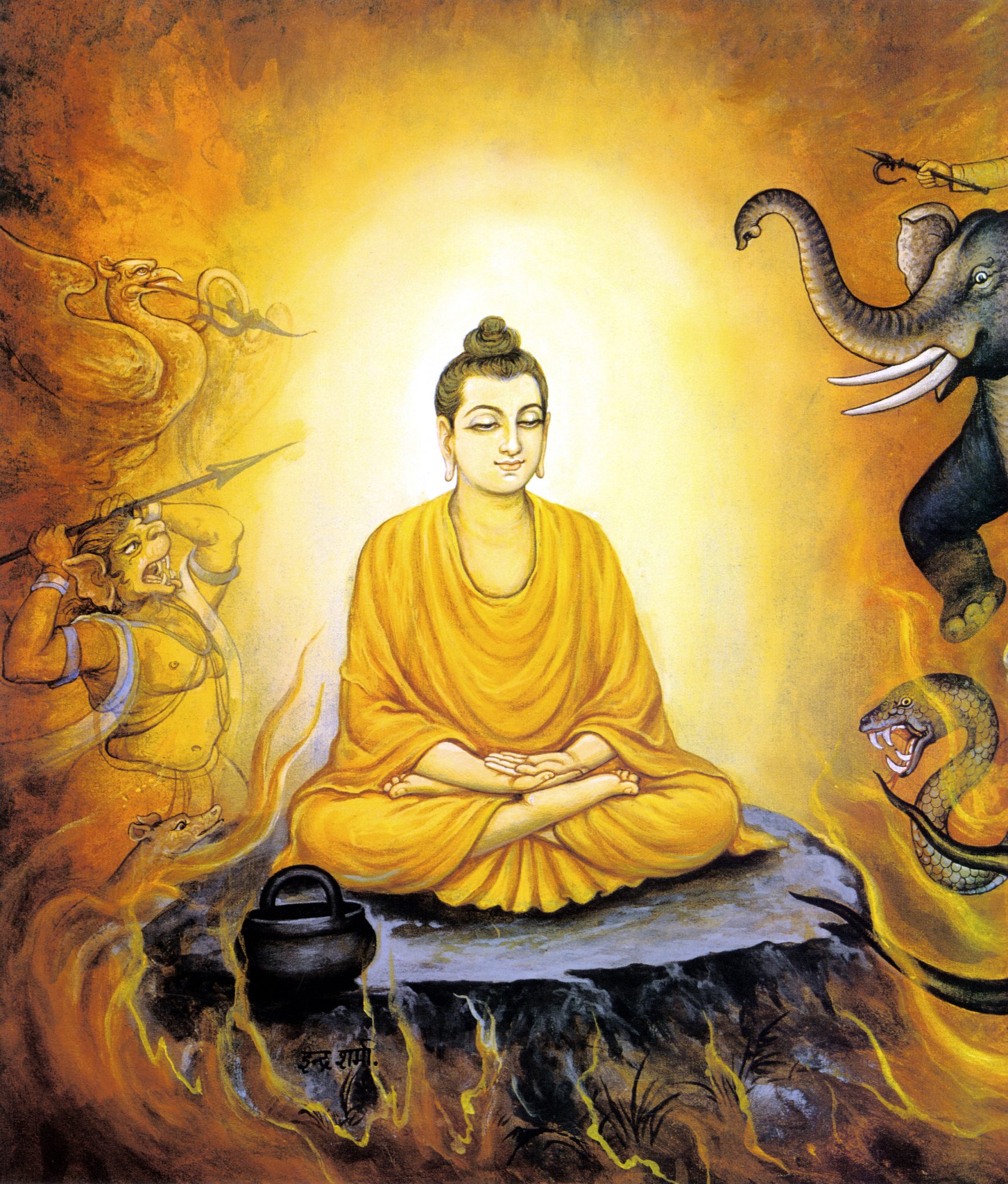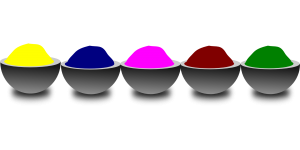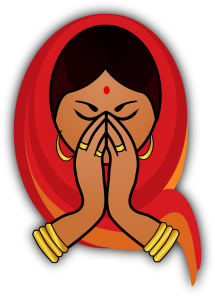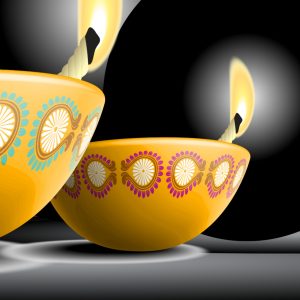 Sāvitrī dāsī: Gurudeva, Muslim people are so difficult to convince. They don’t change their minds.
Sāvitrī dāsī: Gurudeva, Muslim people are so difficult to convince. They don’t change their minds.
Śrīla Bhaktivedānta Nārāyaṇa Mahārāja: Somehow we must continue. So many devotees are joining in China and Russia.
Hlādinī-śakti dāsī (of Hawaii): Buddhists will be conquered by love for Kṛṣṇa. They have no love in their hearts.
Śrīla Bhaktivedānta Nārāyaṇa Mahārāja: They are against bhakti – more so than Māyāvādīs. They are simply absorbed in false logic, and therefore their numbers will increase as Kali-yuga advances.* Śrī Caitanya Mahāprabhu came and spread Kṛṣṇa’s name, so this nāma-saṅkīrtana will go everywhere.
* Whatever is not genuine will increase as Kali-yuga advances. Most Buddhists today follow Gautama Buddha, who is not the incarnation of Kṛṣṇa. They have no proper scriptural siddhānta, and therefore they depend on false logic. (Śrīpāda Mādhava Mahārāja)
P.H. Young: I understand that Buddha is a reincarnation of Kṛṣṇa.
Śrīla Bhaktivedānta Nārāyaṇa Mahārāja: There are two different Buddhas. Regarding the Buddha whose teachings are prominent in the present-day world, he is not an incarnation. He says that God is zero, only zero existed previously, we are now zero, the entire world is zero, and after this life everything will be zero.
On the other hand, in the Vedic literature our sanātana-dharma has been glorified:
oṁ pūrṇam adaḥ pūrṇam idaṁ
pūrṇāt pūrṇam udacyate
pūrṇasya pūrṇam ādāya
pūrṇam evāvaśiṣyate
(Śrī Īśopaniṣad, Invocation)
The Personality of Godhead is perfect and complete, and because He is completely perfect, all emanations from Him, such as this phenomenal world, are perfectly equipped as complete wholes. Whatever is produced of the Complete Whole is also complete in itself. Because He is the Complete Whole, even though so many complete units emanate from Him, He remains perfectly complete.
Kṛṣṇa, God, is infinite. Whatever emanates from that infinity is also infinite. God is infinite, His incarnations are infinite, and at the same time He remains the infinite balance.
Śrīpāda Dāmodara Mahārāja: I read Vaiṣṇava-vijaya, and there it says that Rāvaṇa would meet with Buddha. Is that Viṣṇu Buddha, or…?
Śrīla Bhaktivedānta Nārāyaṇa Mahārāja: There are sixteen buddhas. Māyāvāda has been present in this world since Satya-yuga. Śaṅkarācārya, who is said to be a māyāvādī, appeared so much later on. Rāvaṇa was a Buddhist.
Śrīpāda Dāmodara Mahārāja: Viṣṇu Buddha has his own planet?
Śrīla Bhaktivedānta Nārāyaṇa Mahārāja: Kikatesu bhaviśyati. Kikata refers to the province of Gayā (Bihār). Viṣṇu Buddha appeared in Gayā.
Śrīpāda Dāmodara Mahārāja: Viṣṇu Buddha has his own planet?
Śrīla Bhaktivedānta Nārāyaṇa Mahārāja: It may be.
Śrīpāda Dāmodara Mahārāja: His devotees are in śānta-rasa? This book, Vaiṣṇava-vijaya, is very strong – very nice, wonderful.
Sam: I have been a Buddhist most of my life, but I am encouraged to submit to the Hare Kṛṣṇa organization.
Śrīla Bhaktivedānta Nārāyaṇa Mahārāja: I went to China. There is a Buddhist leader with 40,000 disciples, and his prominent preachers have a total of about 1,100,000 disciples. He wants to surrender all of his followers to me, and he is making a very big preaching centre.
Sam: I can understand why this is more appealing in comparison to the philosophy we are used to.
Śrīla Bhaktivedānta Nārāyaṇa Mahārāja: You should know that Buddhism came from Gautama Buddha who is from Gayā in India. His birthplace was in Nepal. He preached that the world was created from zero, and in the end we become zero. His doctrine claimed that there is no God and no jīva, nor is there anything else: There was and is only zero.
If anyone wants to be zero, or nothing, that person will do well to accept this Buddhist doctrine. The Buddhist preachers pose many arguments in support of their conception and can attract general people very easily, but they cannot attract anyone who is knowledgeable. The Buddhist doctrine was driven out of India, to Tibet, and then to Japan, China, and other places. This doctrine is again being rejected, and people are now coming to kṛṣṇa-bhakti.
You are very lucky that you want to surrender yourself and be happy. You are a spirit soul, part and parcel of Kṛṣṇa. You are His eternal servant. There is happiness in the process of bhakti, whereas in Buddhism there is no happiness. After all, if all is zero, there is no one to be happy.
In reality, the soul is part and parcel of Kṛṣṇa, His eternal servant. He can enjoy the service of Kṛṣṇa.
Madhuvrata dāsa: Gurudeva, I have a question. Śrī Caitanya-caritāmṛta states that when Śrī Caitanya Mahāprabhu travelled in South India, He met some Buddhists and defeated the nine principle truths of Buddhism. Are these nine truths the original nine truths of Viṣṇu Buddha, or are they of Gautama Buddha, or are they the teachings of disciples? Or, where are they coming from?
Śrīla Bhaktivedānta Nārāyaṇa Mahārāja: There are two Buddhas – Bhagavān Buddha and human (Gautama) Buddha. Bhagavān Buddha is foretold in Śrīmad Bhāgavatam.
tataḥ kalau sampravṛtte
sammohāya sura-dviṣām
buddho nāmnāñjana-sutaḥ
kīkaṭeṣu bhaviṣyati
(Śrīmad-Bhāgavatam 1.3.24)
[Then, in the beginning of Kali-yuga, the Lord will appear as Lord Buddha, the son of Añjanā, in the province of Gayā, just for the purpose of deluding those who are envious of the faithful theist.]
Kīkaṭeṣu bhaviṣyati. Kīkat refers to Gayā, and bhaviṣyati indicates that he will take birth in Bihār, Gayā. He did not accept the killing of cows, horses, and other animals in sacrifice, and taught that this was quite violent. He said that if the animal sacrifices are able to give those animals life again, then they can be performed; otherwise not.** “Ahiṁsā paramo dharmaḥ – nonviolence is the supreme religion.” What does ‘nonviolence’ mean?
Vrajanātha dāsa: Nonviolence, meaning ‘not causing any distress for others,’ is the best principle of religion.
Śrīla Bhaktivedānta Nārāyaṇa Mahārāja: If someone obstructs us in our service to Kṛṣṇa,  that is also violence. Generally people regard the killing of animals as violence, but even the obstruction of another’s bhakti is violence. Unlike Bhagavata Buddha, Gautama Buddha was not a theist. He took birth in Nepal, in Kapilavastu, as the son of a king. Gautama Buddha was somewhat confused about the origin of the world, who created it, and why was it created, but he was very sympathetic and merciful to animals and others. Once, his brother shot a pigeon with some arrows, and that pigeon fainted but did not die. Gautama Buddha somehow took the arrow from his body, gave him medicine, and nourished him until he became well.
that is also violence. Generally people regard the killing of animals as violence, but even the obstruction of another’s bhakti is violence. Unlike Bhagavata Buddha, Gautama Buddha was not a theist. He took birth in Nepal, in Kapilavastu, as the son of a king. Gautama Buddha was somewhat confused about the origin of the world, who created it, and why was it created, but he was very sympathetic and merciful to animals and others. Once, his brother shot a pigeon with some arrows, and that pigeon fainted but did not die. Gautama Buddha somehow took the arrow from his body, gave him medicine, and nourished him until he became well.
He once told his father, “I want to go out of the palace.” He then left the palace, for the first time, on the chariot with his chief minister. Outside the city he saw a baby coming from the womb of his mother, crying, “Ah, aahh,” and thought, “What is this? A baby boy is taking birth.” He understood the baby was suffering pain, and that was why he was crying. Then, after some distance he saw a bride and groom with their very large wedding procession, with horses and abundant paraphernalia, thus creating a very good festival. He asked, “What is this?” “A marriage party.” “What is a marriage party?” “A young lady is given to a young man for the rest of her life; this is called marriage.”
After some time he saw an old person and thought, “Oh, after some time that very baby boy will become old like this person who cannot walk.” Then he saw a funeral, with many people carrying a dead body and shouting, “jagat mithyā rāma nāma satya hai – this world is false, Rāma’s name is truth.” He thought, “What is this? Oh, after some more time that baby who took birth became big and then married, after that he became old, and now he is dead. Oh, what is this?”
After seeing these things, he left his home and went to Gayā. He heard that buddha, meaning ‘realized knowledge,’ was present there, and he thought, “I want to know what is this world, who created it, and where I came from.” He did not go to a guru or Vaiṣṇava for the answers to his queries. Rather, he sat down in meditation, alone, and nothing came – zero. Thus he concluded, “This world is zero, it has come from zero, and in the end it will be zero.”
He began to preach that there is no God, and that the world was manifest automatically. A cow makes cow dung, and after one or two days worms ‘automatically’ come out of it. Similarly, he speculated, this world manifested automatically, out of nothing, there is no prakṛti, or material nature, working under any higher supervision, and there will be nothing in the end. He refused to accept the authority of Veda and the existence of God.
This is his theory, not the theory of Bhagavān Buddha, Kṛṣṇa’s incarnation. There is so much difference between them.
Madhuvrata dāsa: Did Bhagavān Buddha ever mention what is sādhana or sādhya?
Śrīla Bhaktivedānta Nārāyaṇa Mahārāja: He left that to others, and He personally only preached ahiṁsā, non-violence.
Sundara-gopāla dāsa: Śrīla Gurudeva, was Emperor Aśoka a follower of Gautama Buddha or Bhagavān Buddha?
Śrīla Bhaktivedānta Nārāyaṇa Mahārāja: Initially he was like other general people, in that  he had faith in God. Once he went to war and saw the death of thousands of soldiers. He thought. “Why did I do this? I will also die in the end, so why am I doing this?” In the meantime, Gautama Buddha met him and said, “Do not worry about anything in this world. This world is zero, it comes from zero, and the end will be zero.”
he had faith in God. Once he went to war and saw the death of thousands of soldiers. He thought. “Why did I do this? I will also die in the end, so why am I doing this?” In the meantime, Gautama Buddha met him and said, “Do not worry about anything in this world. This world is zero, it comes from zero, and the end will be zero.”
It is said that one becomes like those with whom he associates. The king was consoled, and by the association of Gautama Buddha he accepted atheistic Buddhism.
** “The brāhmaṇas entrusted with the performance of yajña were very realized souls, and to test their realization an old animal was offered in the fire and rejuvenated. That was the test of a Vedic mantra. The animals gathered were not meant to be killed and eaten. The real purpose of a sacrifice was not to replace a slaughterhouse but to test a Vedic mantra by giving an animal new life” (Śrīmad-Bhāgavatam 4.4.6, purport by Śrīla Bhaktivedānta Svāmī Mahārāja).
Bhagavān Buddha and Gautam Buddha are not the same
In 1942, he (Śrīla Bhakti Prajñāna Keśava Mahārāja) established Śrī Uddhāraṇa Gauḍīya Maṭha in the town of Chuchura and began to preach in the nearby areas. During this time, in the town of Ramapur, he gave lectures for one week on Śrīmad-Bhāgavatam in a Sanskrit school, which was established by a famous lawyer named Śrī Phaṇibhūṣaṇa Cakravartī Śāstrī (M.A.V.L.). The school contained a large library, and one particular Buddhist scripture in it, entitled Laṅkāvatāra-sūtram, caught Mahārājajī’s attention. He included quotes from this book in his own compilation called Māyāvāder Jīvanī – A History of Māyāvāda. Laṅkāvatāra-sūtram is a collection of historical accounts from Tretāyuga about Māyāvādīs. In one place, it is written that Rāvaṇa, the King of Laṅkā, used to travel by celestial airplane to a high mountain peak to meet with Buddha and study Ādvaitavāda.
In 1946, while performing ūrjā-vrata in Kāśī Mahā-nagarī, Mahārājajī travelled to Buddha Gayā [presently known as Bodh Gaya]. There he came to know that since ancient times the Buddha Gayā temple was managed entirely by the esteemed mahanta of Śaṅkarācārya’s ādvaitavādī lineage. Śaṅkarācārya thus has claim to the wealth of Buddha Gayā. How did Śaṅkarācārya become the leader of a Buddhist maṭha? Does this imply that the Śaṅkara sampradāya originates from a Buddhist lineage?
Overwhelmed with curiosity, Mahārājajī inquired about this from the head of that temple, who gave him a book to inspect entitled Lalita Vistāra. Mahārājajī refers to parts of that book in his own Māyāvāder Jīvanī. There, it is mentioned that Śākya Buddha performed austerities underneath a pipal tree at Buddha Gayā, which is the appearance place of Pūrṇa Buddha (the complete Buddha), having understood the spot to be favourable for the attainment of perfection.
In his book, Mahārājajī writes, “Buddha Gayā’s original name was Kīkaṭa. To this day, Śaṅkara sannyāsīs worship a deity of Buddha at this place.
They accept that Buddha Gayā is the appearance place of Ādi Buddha, or Viṣṇu Buddha. It is where Śākya-siṁha Buddha performed his spiritual practice. By this it is clearly evident that Bhagavān Buddha and Gautama Buddha are not the same person. According to Amarakoṣa (an ancient, highly reputable Sanskrit thesaurus), another name for Bhagavān Buddha is Samasta-bhadra.
Bodhisattva Buddha mentions Samasta-bhadra Buddha. After attaining realization, Gautama became known by the name Buddha. Thus, we know, there are three Buddhas: Gautama Buddha, Bodhisattva Buddha and Ādi Buddha.”
In Māyāvāder Jīvanī, Mahārājajī has written, “Laṅkāvatāra-sūtram is a famous and authoritative Buddhist scripture. The Buddha mentioned in this book is not Śākya-siṁha Buddha. In the first chapter of this book, the king of Laṅkā, Rāvaṇa, sings the praises of Bhagavān Buddha and all the Buddhas who are yet to appear.
“The Viṣṇu Buddha mentioned in Śrīmad-Bhāgavatam is not the śunyavādī (nihilist) Gautama Buddha. ‘Namo buddhāya śuddhāya, daitya-dānava mohine – I propitiate that pure Buddha who bewilders the demonic sons of Diti and Danu’ (Śrīmad-Bhāgavatam 10.40.22). And ‘tataḥ kalau saṁpravṛtte, sanmohāya suradviṣaṁ / buddho-nāmānjana-sutaḥ, kīkaṭeṣu bhaviṣyati – then, just as Kali-yuga commences, a son of Añjanā by the name of Buddha will appear in Kīkaṭa to bewilder the enemies of the theists’ (Śrīmad-Bhāgavatam 1.3.24). Viṣṇu Buddha is also referred to in the Liṅga Purāṇa, Bhaviṣya Purāṇa, Varāha Purāṇa and Nṛsiṁha Purāṇa. Buddha Gayā is the appearance place of Viṣṇu Buddha. It is a place of worship for Śākyasiṁha Buddha.” Mahārājajī established these truths in his Māyāvāder Jīvanī on the grounds of scriptural reference and sound logic.
Māyāvāda – covert Buddhism
From the scriptures of Śrī Nārada and Śrī Śāṇḍilya Ṛṣi, pūjyapāda Mahārājajī revealed that another name for Brahma-sūtra is Bhaktisūtra.
He did not accept the jnāna-vāda of Ācārya Śaṅkara to be the same as brahma-vāda.
He provided proof from Padma Purāṇa and other scriptures that Māyāvāda is not supported in śāstra and is nothing other than covert Buddhism. Although it appears to resemble Veda, in actuality, it contradicts Veda, is destructive to devotion, and does not concur with Vedic teachings. According to Padma Purāṇa and Varāha Purāṇa, Śrī Viṣṇu instructed Śrī Rudra as follows: “Devise a scripture of bewilderment that will conceal My true nature.” These teachings are Rudra’s form of destruction intended to annihilate the eternality of bhakti, the bhakta and Bhagavān. Mahārājajī has assessed this topic thoroughly in his book.
In Vedānta, the prefix ni in the words nirākāratva (formlessness), nirviśeṣatva (undifferentiatedness), niḥśaktitva (powerlessness) and nirguṇatva (quality-lessness) precludes mundanity (prākṛta-tattva) while affirming transcendence (aprākṛta-tattva). Quoting the views of Śrīla Kavirāja Gosvāmī and Śrīla Bhaktivinoda Ṭhākura, Mahārājajī cautions the practitioner of bhakti to shun Māyāvāda, which is adverse to bhakti, and the company of Māyāvādīs, which destroys bhakti. Driving Māyāvāda far away and giving love for Bhakti-devī (the goddess of devotion) was one of Mahārājajī’s main purposes.
―Śrīla Bhakti Pramoda Purī Mahārāja
Image/Art made possible by Pixabay.com & Krishnapath.org








